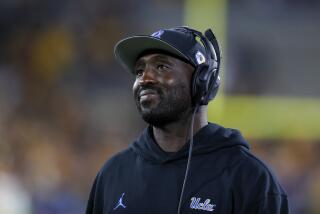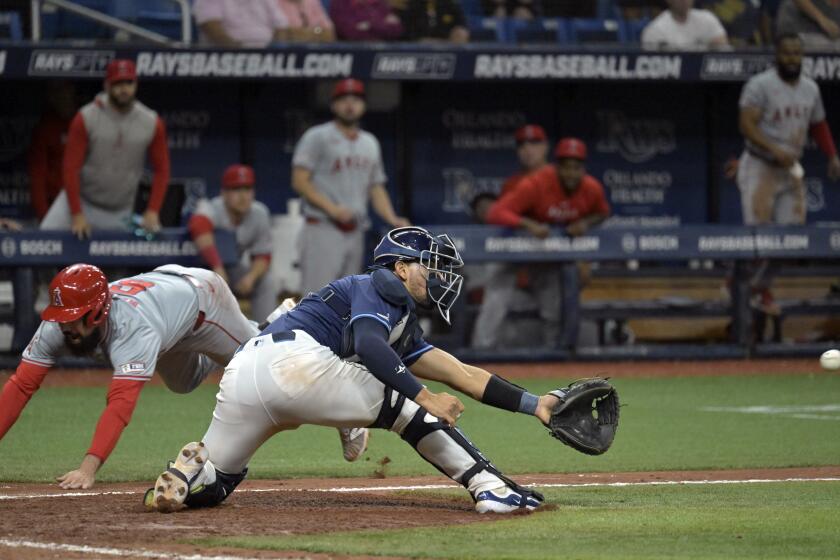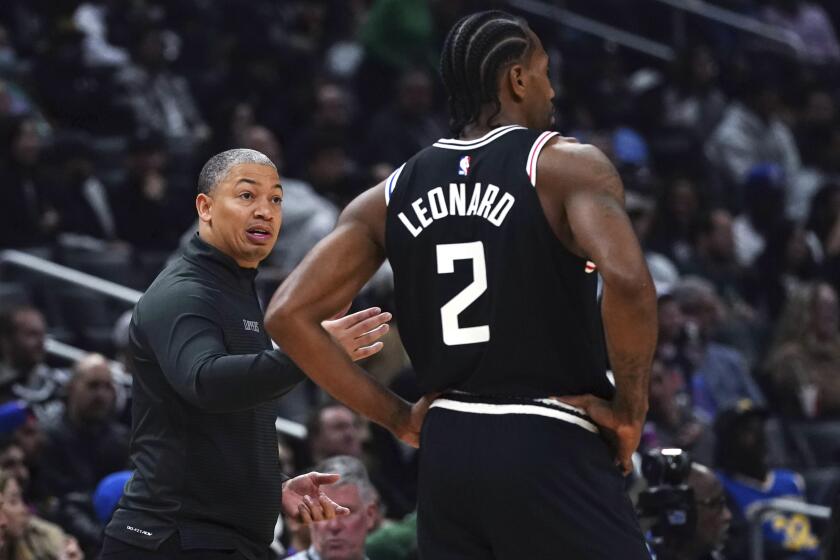Remembering the Day Lou Gehrig Sat Down
On June 2, 1925, Wally Pipp had a headache and was replaced at first base in the New York Yankee lineup by a quiet hometown kid named Lou Gehrig.
It took 14 years, 2,130 games and an incurable illness to put Gehrig back on the bench.
And when the Iron Horse took himself out of the lineup 50 years ago, on May 2, 1939, he also moved out of the shadow of Babe Ruth and into baseball immortality.
The shy son of German immigrants living on New York’s East Side never captured the imagination of the public the way the flamboyant Ruth did, but when his remarkable consecutive-game streak ended he took with him numbers comparable to anyone who ever played the game:
-- 493 lifetime homers.
-- 1,990 RBIs.
-- A .632 slugging percentage.
-- A major-league record 23 grand slams.
-- Four home runs in a game.
-- In 1927, he hit .373 with 47 home runs and 175 runs batted in. He also had 52 doubles, 18 triples, walked 109 times and scored 149 runs. Yet it was a season lost to Ruth’s 60 home runs.
-- In the 13 full seasons he played, Gehrig averaged 147 RBIs a season. Henry Aaron, Willie Mays and Mickey Mantle never drove in that many runs in a seeason even once.
-- In four seasons during the peak of his career he averaged only 37 strikeouts a year. Reggie Jackson averaged 129 strikeouts a season for his career.
But it is his 2,130 consecutive games played that is considered one of baseball’s unbreakable records. The next best is the mark Gehrig broke -- 1,307 straight games by Everett Scott, 823 games (more than five seasons) short of Gehrig’s mark.
If a rookie was to start a consecutive-game streak in 1989, he would have to play every game from now until early in the season of 2,002 to surpass Gehrig.
Since 1939, no one has even come close.
Steve Garvey holds the National League record with 1,207 consecutive games from Sept. 3, 1975, to July 29, 1983.
Garvey retired after the 1987 season, but if he had kept the streak going in 1983 and was playing today, he would still be a few games short.
“I don’t think anyone will ever break Lou Gehrig’s record,” Garvey said. “I know I played with a lot of nagging injuries to keep the streak alive and I didn’t even get close.”
Baltimore shortstop Cal Ripken recently surpassed playing in 1,100 consecutive games. He would still need another six-plus seasons to reach Gehrig.
“It’s not really something I’m thinking about,” Ripken said. “I can’t even imagine reaching that point. Hey, I’m surprised I’ve gotten this far.
“I just play one game at a time.”
A star at Columbia University, Gehrig was scouted by Paul Krichell and signed with the Yankees when offered a $1,500 bonus.
After two short stints with New York in 1923 and 1924, Gehrig started his streak on that June day in 1925 when Pipp, who had been the Yankees’ first baseman since 1915, told Manager Miller Huggins he had a headache and asked to take the day off.
Gehrig took over at first base, and stayed there for 15 years. He stayed through muscle pulls, broken bones, and yes, even a slump or two.
Gehrig turned 35 in 1938 and his average slipped to .295 with 29 homers and 114 RBIs. While million-dollar numbers by today’s standards, it was far below his norm and provoked concern for Gehrig and the Yankees.
Gehrig, whose top salary was $39,000, had a sluggish spring training in 1939 and a routine play at Yankee Stadium in April told him something was wrong.
A ball was hit back to pitcher Johnny Murphy and Gehrig had trouble getting to the bag.
Murphy told the Iron Horse, “nice play,” but Gehrig knew it was nothing special.
In his first 28 at-bats in 1939, Gehrig had four hits with no homers and one RBI.
Gehrig knew something was wrong, he just didn’t know what.
May 1, 1939, was an off day and Gehrig spent some lonely hours in a Detroit hotel room.
The next day, Gehrig told Manager Joe McCarthy: “I’m taking myself out of the lineup.”
“I decided last Sunday night on this move,” Gehrig said in announcing his decision to the press. “I haven’t been a bit of good to the team since the season started. It would not be fair to the boys, to Joe or to the baseball public for me to try going on. In fact, it would not be fair to myself.”
McCarthy thought Gehrig just needed some much deserved time off and would be back soon.
“I told him it would be as he wished,” McCarthy said at the time. “Like everybody else I’m sorry to see it happen. I told him not to worry. Maybe the warm weather will bring him around.”
But the weather had nothing to do with Gehrig’s problems.
He visited the Mayo Clinic in Minnesota, and it was discovered he had an incurable disease. He was diagnosed as having Amyotrophic Lateral Sclerosis. But the world has come to know it as Lou Gehrig’s disease.
More to Read
Get our high school sports newsletter
Prep Rally is devoted to the SoCal high school sports experience, bringing you scores, stories and a behind-the-scenes look at what makes prep sports so popular.
You may occasionally receive promotional content from the Los Angeles Times.






